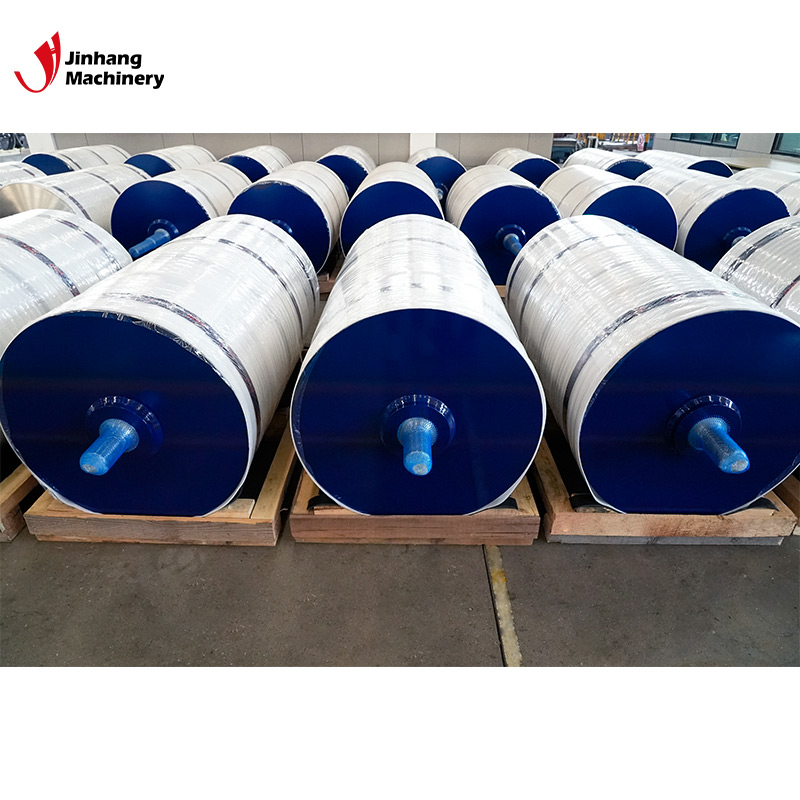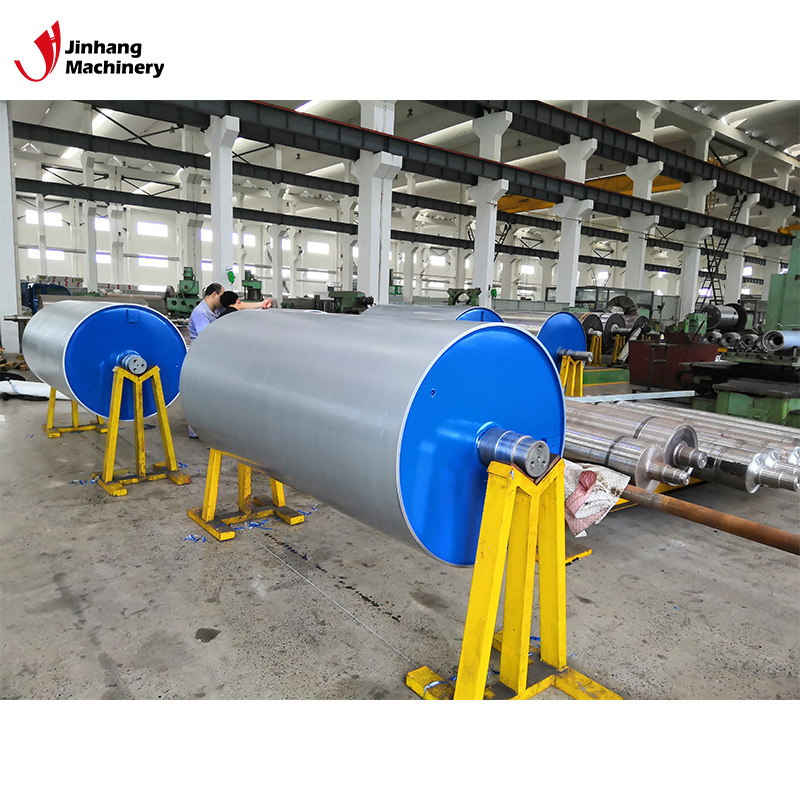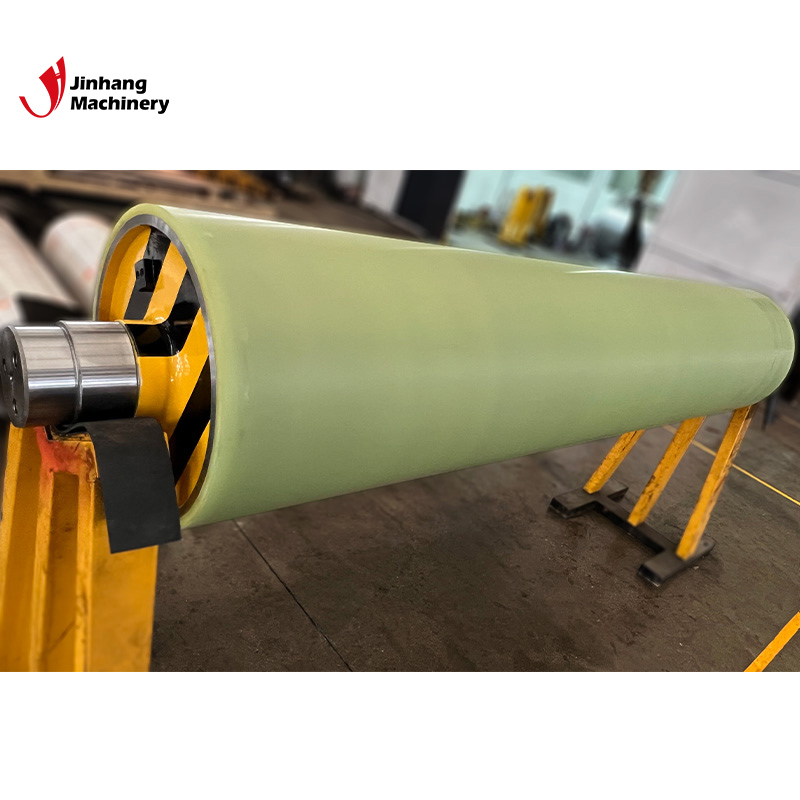What are the surface treatment methods for industrial rubber roller?
Among many industrial fields, rubber rollers are widely used in printing, coating, packaging, textiles, and paper processing. Its surface quality directly affects the quality and production efficiency of the final product. In order to improve the performance of industrial rubber rollers, extend their service life and adapt to different working environments, the surface treatment of rubber rollers is an important part that cannot be ignored. This article will explore the common surface treatment methods of industrial rubber rollers in depth, and analyze the characteristics and applicable scenarios of different treatment methods.

What is an industrial rubber roller?
Industrial rubber rollers are rollers made of rubber materials, which usually have strong wear resistance, elasticity and compression resistance. They are widely used in various industrial fields, especially in printing, coating, compounding, cleaning and other processes. According to work requirements, rubber rollers can be customized according to the required hardness, elasticity and chemical properties. Rubber rollers are usually composed of a metal core and a rubber layer. The surface treatment method of the rubber layer directly affects the function and service life of the industrial rubber roller.
What is the importance of rubber roller surface treatment?
The surface treatment of industrial rubber roller can not only improve its friction when in contact with other objects, but also improve its performance in many aspects such as wear resistance, corrosion resistance, and aging resistance. Good surface treatment can effectively extend the service life of rubber roller, reduce the frequency of maintenance and replacement, thereby improving production efficiency and reducing the production cost of enterprises.
1. Improve wear resistance
Industrial rubber rollers are often used in high-speed processes, such as printing and coating processes. Its surface will be subjected to friction and pressure. Therefore, surface treatment can effectively improve the wear resistance of the roller surface, reduce damage caused by wear, and ensure long-term stable operation of the roller body.
2. Improve ink transfer performance
During the printing process, the surface treatment of industrial rubber rollers can determine the transfer performance of ink. Different surface treatment methods can control the friction when the roller surface contacts paper or other materials, ensuring uniform transfer of ink. Rubber rollers with good surface treatment can provide more uniform and precise printing effects.
3. Improve anti-aging ability
As the use time increases, the surface of industrial rubber rollers is prone to aging, cracking or fading. Through proper surface treatment, its UV resistance, oxidation resistance and other properties can be improved, thereby effectively delaying the aging process and extending the service life of the rubber roller.

What are the surface treatment methods for industrial rubber rollers?
According to the use requirements of industrial rubber rollers, there are several common surface treatment methods. Different surface treatment technologies have different advantages and characteristics in different application environments.
1. Vulcanization treatment
Vulcanization is the most common way of surface treatment for industrial rubber rollers. It forms a cross-linked structure by heating the rubber to a certain temperature and adding sulfur, thereby enhancing the hardness, heat resistance and wear resistance of the rubber. The surface of the rubber roller after vulcanization is harder and can withstand higher pressure and friction, so it is widely used in occasions requiring higher wear resistance.
Advantages:
● Improve the hardness and wear resistance of rubber;
● Enhance the anti-aging and antioxidant ability of rubber;
● Improve high temperature resistance.
Application areas:
● Vulcanized rubber rollers are widely used in printing, coating, laminating, papermaking and other industries, especially in high-speed and high-friction processes.
2. Surface spraying treatment
Surface spraying treatment is a common surface treatment method for industrial rubber rollers. Usually, spraying metal, ceramics, polyurethane and other materials are used to coat the rubber surface. Spraying can not only improve the surface smoothness of the rubber roller, but also improve its corrosion resistance, wear resistance and heat resistance.
Advantages:
● Improve surface hardness and corrosion resistance;
● Make the rubber roller more resistant to wear;
● The surface smoothness or roughness can be adjusted as needed.
Applicable fields:
● Spraying treatment is commonly used in food, chemical, pharmaceutical and other industries, especially in places requiring high sanitary conditions.

3. Electroplating treatment
Electroplating treatment is to plate a metal layer on the surface of the industrial rubber roller. Commonly used metal materials include chromium, nickel, copper, etc. Electroplating can effectively improve the hardness, corrosion resistance and wear resistance of the rubber roller surface, especially the chromium plating, which can significantly improve the wear resistance and oxidation resistance of the roller surface.
Advantages:
● Improve the corrosion resistance of the roller surface and reduce wear;
● Enhance the hardness of the roller surface to adapt to high-load working environments;
● Improve surface smoothness and ink transfer performance.
Application areas:
● Electroplating treatment is widely used in printing, coating, plastic processing and other industries, especially in situations where good surface smoothness and high wear resistance are required.
4. Polyurethane coating
Polyurethane coating is a treatment method that coats a layer of polyurethane material on the surface of an industrial rubber roller. Polyurethane has excellent wear resistance, corrosion resistance and oil resistance. By coating the surface of the rubber roller with polyurethane material, the durability and adaptability of the rubber roller can be significantly improved.
Advantages:
● Improve wear resistance, corrosion resistance and oil resistance;
● Improve roller surface smoothness and enhance ink transfer performance;
● Adapt to the erosion of different chemicals and extend service life.
Application areas:
● Polyurethane coating is widely used in automobile manufacturing, electronics industry, printing and packaging and other industries, especially when the roller surface needs to be treated for oil resistance or corrosion resistance.
5. Laser Engraving Treatment
Laser engraving treatment is to form fine textures or patterns on the surface of industrial rubber roller by irradiating laser beam on it. This treatment method is usually used to improve the surface friction performance of rubber roller, improve ink transfer and printing quality.
Advantages:
● Improve the surface accuracy and friction of rubber roller;
● Different texture shapes can be customized according to needs;
● Increase the surface contact area and improve the ink transfer effect.
Application areas:
● Laser engraving treatment is usually used in printing, coating, packaging and other industries, especially in occasions requiring high-precision printing or high-quality coating.
6. Heat treatment
Heat treatment is a treatment method that changes the surface properties of industrial rubber roller by heating and cooling. By controlling the heating temperature and time, the hardness, wear resistance and aging resistance of rubber roller can be improved. Heat treatment is usually used to improve the surface toughness and pressure resistance of rubber roller.
Advantages:
● Improve the hardness and elasticity of rubber roller;
● Improve wear resistance, pressure resistance and heat resistance;
● Extend service life and reduce maintenance frequency.
Application areas:
● Heat treatment is widely used in industrial manufacturing, especially in working environments with high loads, high temperatures and high friction.

How to choose the surface treatment method for rubber rollers?
Choosing the appropriate surface treatment method for industrial rubber rollers requires comprehensive consideration based on specific application requirements, working environment and material properties of rubber rollers. The following are several common application scenarios and their corresponding surface treatment methods:
1. High-speed printing industry
During high-speed printing, rubber rollers need to withstand high friction and pressure while maintaining good ink transfer performance. At this time, it is recommended to use electroplating, polyurethane coating or laser engraving to improve the wear resistance and ink transfer performance of rubber rollers.
2. Coating industry
The coating industry requires industrial rubber rollers to have good surface smoothness and high wear resistance. Polyurethane coating and vulcanization are often used to improve the wear resistance and corrosion resistance of rubber rollers and ensure coating uniformity and precision.
3. Chemical and food industries
In the chemical and food industries, industrial rubber rollers need to have strong chemical corrosion resistance and oil resistance. At this time, polyurethane coating and spray treatment are common choices, which can effectively improve the resistance of the roller surface to chemicals.
Premium Quality Customized Rolls – Competitive Pricing & Fast Delivery
With over two decades of experience, JH Machinery offers premium-quality custom rolls that fit a wide range of industrial machinery. Our production lines use advanced equipment to manufacture durable polyurethane, rubber, and carbonized coating rolls. We supply these at competitive prices directly from our China factory, with special discounts available on large orders.
Buy wholesale or small batches with confidence backed by our ISO9001 certification and excellent customer service. Contact us for fast delivery and tailored quotes!
